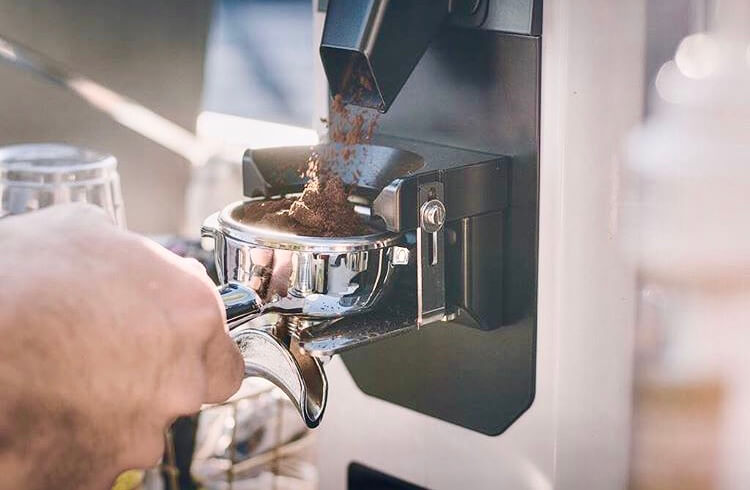Exploring the Rich Flavors of Coffee Beans: a Deep Dive Into Espresso and Blended Coffee Beans
When you check out the abundant tastes of coffee beans, you discover an intricate globe where each range brings its own personality to your cup. As you navigate with the art of espresso and the creative thinking behind combined coffees, you'll begin to value the nuances that make each sip one-of-a-kind.
The Beginnings of Coffee Beans: Checking Out Terroir and Flavor Profiles
When you take a sip of coffee, you're not simply appreciating a drink; you're experiencing an abundant tapestry of flavors shaped by the beans' origins. Each area creates unique flavor accounts influenced by soil, elevation, and environment. Beans from Ethiopia typically rupture with intense, fruity notes, while those from Colombia tend to supply a well balanced, nutty sweet taste.
As you discover various beginnings, you'll notice just how terroir-- the ecological elements affecting a plant-- plays a vital role - Single Origin Espresso. The very same coffee variety can taste considerably different relying on where it's expanded
When you take into consideration these aspects, you begin to value the complexity behind your mug. Each sip tells a story of the land and the farmers that supported the beans. So, next time you indulge, think of the trip your coffee took before it reached your hands, and enjoy those detailed flavors that reflect its origin.
Comprehending Espresso: The Art and Scientific Research Behind the Mixture
When you believe about coffee, it's not almost the solid flavor; it's also about the strategies that bring it to life. Understanding how various preparation techniques influence preference can change your brewing experience. Allow's check out the intricacies of coffee prep work and uncover the distinct taste profiles that make each cup special.
Coffee Preparation Strategies
Coffee preparation is both a science and an art, integrating specific methods with a deep understanding of coffee. To begin, you'll desire to choose high-quality, newly roasted beans and grind them carefully for perfect extraction (Single Origin Espresso). The grind size is vital; as well coarse, and your espresso will be weak, as well great, and it'll be bitter
Next, tamp the grounds uniformly in the portafilter to assure uniform removal. When you secure it into the device, purpose for a developing temperature level in between 190 ° F and 205 °
F.As you pull the shot, watch for the best removal time-- around 25-30 seconds. The result should be a rich, velvety coffee with a lovely layer of crema ahead. With practice, you'll master these strategies.
Taste Profiles Described
The world of coffee uses an abundant tapestry of taste profiles that can raise your coffee experience. You'll discover a balance of anger, sweet taste, and level of acidity when you take that initial sip. Each espresso bean carries special notes, from fruity and floral to nutty and chocolaty. Light roasts usually display brilliant acidity and dynamic tastes, while dark roasts present much deeper, bolder tones.
Understanding these profiles aids you choose the appropriate espresso for your palate. Trying out different blends can expose unexpected combinations. As an example, a well-crafted blend might harmonize the bright notes of an Ethiopian bean with the rich, chocolatey touches of a Brazilian bean. Welcome the trip of uncovering espresso's varied flavors, and you'll change your coffee ritual into an amazing adventure.
Processing Approaches: Exactly How They Influence Taste and Fragrance
While it may appear that the beginning of coffee beans is one of the most substantial consider establishing their taste and aroma, the processing methods made use of post-harvest play an equally crucial role. You'll find that these methods can drastically alter the last preference account of your cup.
For example, the washed process eliminates the fruit from the beans before fermentation, typically leading to a cleaner, brighter flavor. The natural process leaves the fruit undamaged throughout drying out, resulting in a sweeter, fruitier profile.
Other approaches, like honey handling, strike an equilibrium, enabling some fruit mucilage to remain, supplying an unique complexity.
Each handling technique engages with the beans' intrinsic characteristics, improving or muting details tastes and aromas. When you drink that coffee or mixed coffee, remember that the trip from cherry to mug is influenced not just by beginning however additionally by exactly how those beans were refined.
Toasting Strategies: Unlocking the Full Potential of Coffee Beans
Roasting methods are crucial for disclosing the full potential of coffee beans, as they change raw, green beans into the aromatic, savory coffee you enjoy. The option of roasting approach-- light, medium, or dark-- drastically influences taste profiles. Light roasts preserve the beans' natural acidity and fruity notes, while medium roasts equilibrium sweetness and richness. Dark roasts, on the other hand, emphasize vibrant, great smoky flavors.
A slower roast at lower temperatures enables for complicated flavors to create, while a quicker roast can increase bitterness. By grasping these strategies, you'll disclose a globe of taste, boosting your coffee experience to new elevations.
The Magic of Blended Coffee: Developing One-of-a-kind Taste Experiences
Producing a special flavor experience with mixed coffee can change your morning routine right into an expedition of preference. By combining different beans from numerous regions, you can expose a symphony of tastes that boost your mug to new heights. Each mix offers a distinct profile, stabilizing body, sweetness, and acidity to develop something absolutely special.
When you choose a mix, you're not simply picking a coffee; you're picking a trip throughout varied landscapes and societies. Explore various mixes enables SOE you to uncover your personal faves, whether you enjoy fruity notes or rich, chocolatey touches.

Sampling Notes: Recognizing the Subtleties in Your Cup
As you sip your coffee, you may notice a range of flavors dancing on your taste, each disclosing the intricacies of the beans. You might taste the intense level of acidity similar to citrus or the deep, abundant notes comparable to dark chocolate. The sweetness might stimulate honey or sugar, stabilizing the total account magnificently.
Take notice of the body of the coffee-- does it feel light and airy, or is it complete and luscious? The coating, also, uses ideas; a lingering aftertaste may mean nuttiness or floral undertones.

Do not neglect to check out the distinct qualities of various beginnings, as each region imparts unique flavors - Single Origin Espresso. For instance, Ethiopian coffees frequently existing fruity notes, while Colombian beans might showcase a more spherical sweetness. By acknowledging these nuances, you'll strengthen your gratitude for each cup, raising your coffee experience to brand-new heights

Brewing Approaches: Making Best Use Of Flavor Extraction for each Bean
When you discover the numerous developing approaches, you'll find that each method can substantially influence the taste profile of your coffee. From French press to pour-over, each technique removes different substances, improving or silencing certain notes. As an example, making use of a French press permits oils to continue to be in the mixture, developing a richer taste, while pour-over highlights clarity and brightness.
Temperature and grind size also play important functions. A coarser work works best for cool mixtures, while a great work is optimal for espresso. Exploring with water temperature level-- in between 195 ° F and 205 ° F-- can reveal surprise flavors, as well.
Don't neglect concerning soaking time; a fast removal can bring about sour notes, while over-extraction may yield bitterness. By readjusting these variables, you can optimize flavor removal and truly raise your coffee experience. Enjoy the journey of discovering what approach best fits your taste!
Regularly Asked Inquiries
What Is the Perfect Water Temperature Level for Developing Coffee?
The excellent water temperature level for brewing coffee's in between 195 ° F and 205 ° F. If you use water that's also hot, you'll over-extract tastes; also chilly, and you won't remove sufficient. Goal for that sweet spot for the finest brew!
Exactly How Does Work Size Affect Coffee Taste?
Grind size significantly impacts coffee taste. Better grinds remove extra flavors and oils, causing a bolder taste, while coarser grinds return a lighter flavor. Changing work size helps you achieve your preferred coffee profile.
Exist Health Advantages Linked With Alcohol Consumption Coffee?

What Is the Difference In Between Arabica and Robusta Beans?
Arabica beans are smoother and sweeter, frequently including fruity tastes, while robusta beans are more powerful with a bitter taste and higher high levels of caffeine web content. You'll notice these differences in fragrance and developing experience.
How Can I Store Coffee Beans for Quality?
To save coffee beans for freshness, keep them in a closed container, far from dampness, warm, and light. If you only grind what you need right before brewing., you'll preserve their flavor much longer.
Checking Out the Rich Tastes of Coffee Beans: a Deep Dive Into Coffee and Blended Coffee Beans.
When you explore the rich tastes of coffee beans, you reveal an intricate world where each range brings its very own character to your cup.When you take a sip of coffee, you're not just taking pleasure in a drink; you're experiencing a rich tapestry of tastes shaped by the beans' origins.Roasting methods are necessary for disclosing the full potential of coffee beans, as they change raw, environment-friendly beans right into the fragrant, delicious coffee you delight in.As you sip your coffee, you may see a range of tastes dancing on your taste buds, each disclosing the details of the beans.